Deep within the lush forests of Southeast Asia lives one of nature’s most remarkable creatures – the Atlas moth. With wings that can span up to 12 inches across, adorned with intricate patterns resembling snake heads, this magnificent insect holds a fascinating secret: as an adult, it never eats. Unlike most creatures that spend their days foraging for food, the adult Atlas moth emerges from its cocoon with a singular purpose – to reproduce before its brief life comes to an end. This article explores the extraordinary life cycle, remarkable adaptations, and the bittersweet existence of one of the world’s largest moths, offering a glimpse into how evolution has crafted a creature that sacrifices nourishment for the continuation of its species.
The Magnificent Size and Appearance of the Atlas Moth
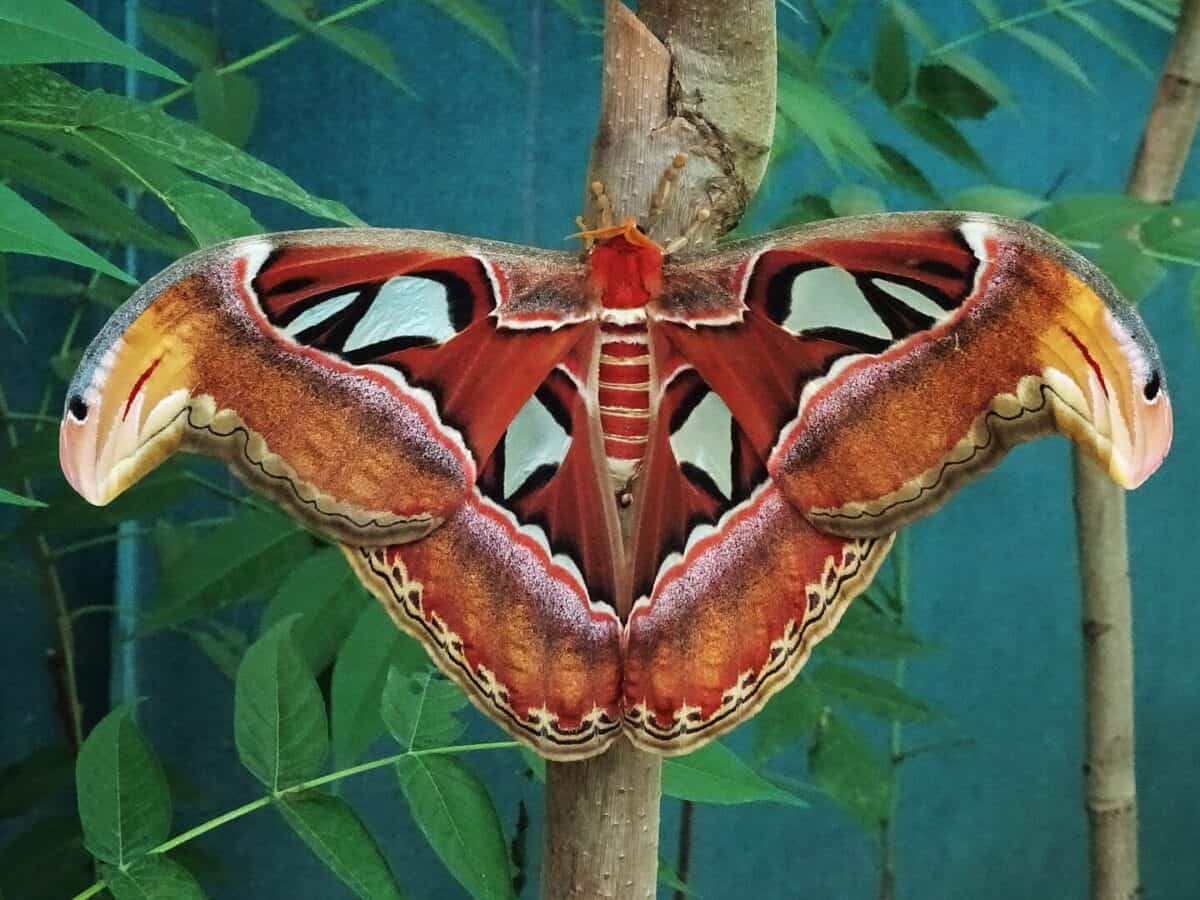
The Atlas moth (Attacus atlas) is among the largest lepidopterans in the world, with a wingspan that can reach between 9 and 12 inches (25-30 cm). This impressive size makes it one of the largest moths by wing surface area, rivaled only by a few other species like the white witch moth. The wings display a stunning array of colors, predominantly reddish-brown with distinctive patterns of triangles, lines, and transparent “windows” that resemble panes of mica. Perhaps most striking are the wing tips, which bear an uncanny resemblance to cobra heads, complete with what appear to be eyes and scales. This remarkable mimicry serves as a defense mechanism, deterring potential predators who mistake the wing tips for the heads of dangerous snakes.
Taxonomy and Distribution: Understanding Where Atlas Moths Belong
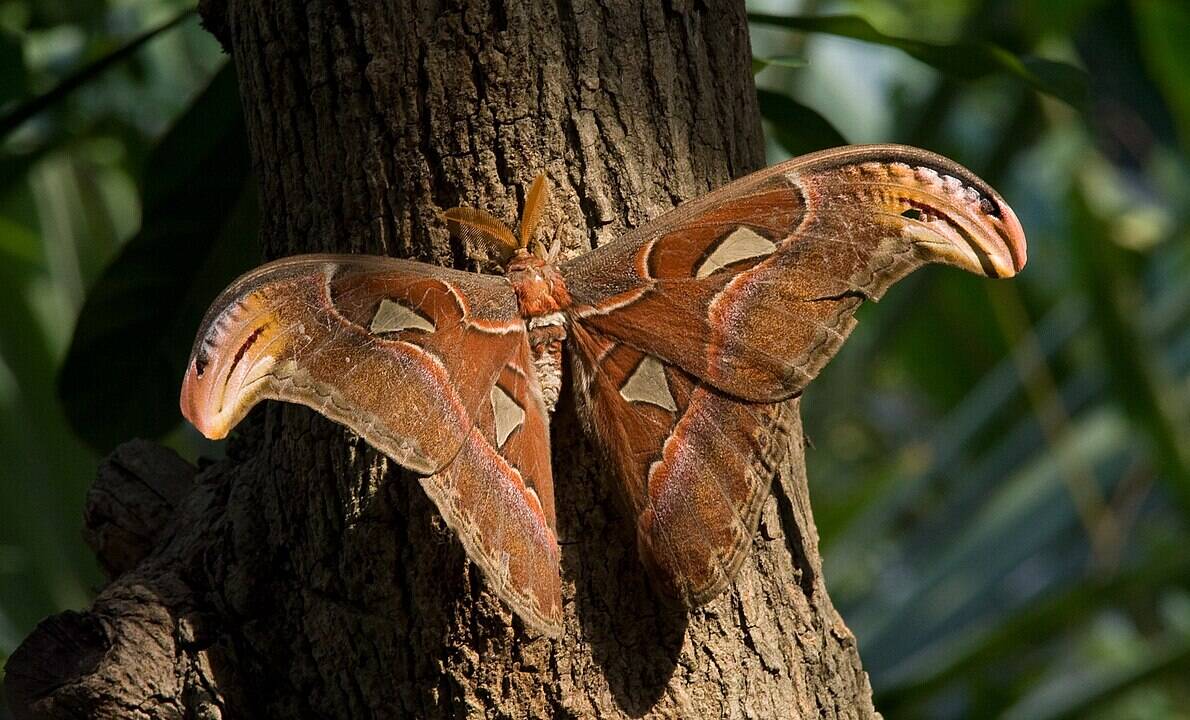
The Atlas moth belongs to the family Saturniidae, commonly known as giant silkmoths or emperor moths. These moths are part of the larger order Lepidoptera, which includes butterflies and moths. Despite often being mistakenly called a butterfly in popular culture, the Atlas moth is definitively a moth, distinguishable by features such as feathery antennae and a stouter body. Native to the tropical and subtropical forests of Southeast Asia, these magnificent insects can be found across a wide region including India, Malaysia, Indonesia, the Philippines, and parts of China. They prefer humid forest environments where their host plants thrive, creating a perfect ecosystem for their remarkable but brief life cycle.
The Fascinating Life Cycle: From Egg to Flightless Giant
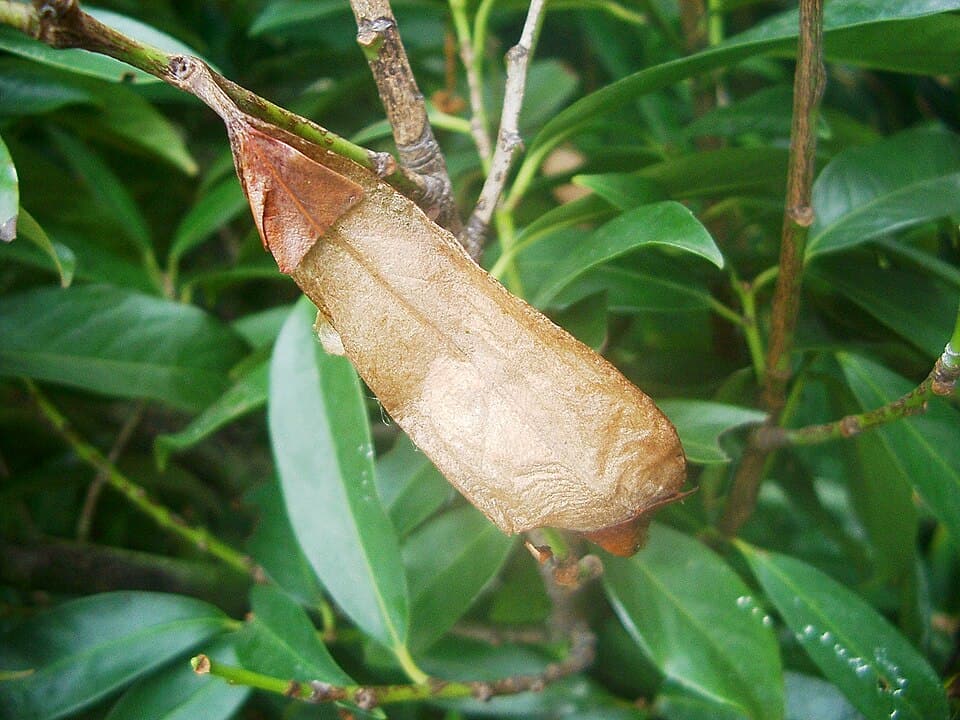
The Atlas moth undergoes complete metamorphosis, transitioning through four distinct life stages: egg, larva (caterpillar), pupa, and adult. Female moths lay around 120 eggs on the underside of leaves from specific host plants. Within 7-14 days, these eggs hatch into tiny caterpillars that immediately begin feeding voraciously. The caterpillar stage lasts approximately one month, during which the larvae grow tremendously, molting several times as they outgrow their skin. The caterpillars are pale blue-green or white with a waxy covering and can reach lengths of up to 4.5 inches (11.5 cm). When ready to pupate, the caterpillar spins a papery brown silken cocoon attached to plant stems. Inside this protective shell, the transformation into an adult moth takes about four weeks. The emergence of the adult is a delicate process as the moth must pump fluid into its wing veins to expand them fully before they harden – a crucial step for an insect that will never strengthen its body with food again.
Why Adults Don’t Eat: The Vestigial Mouthparts
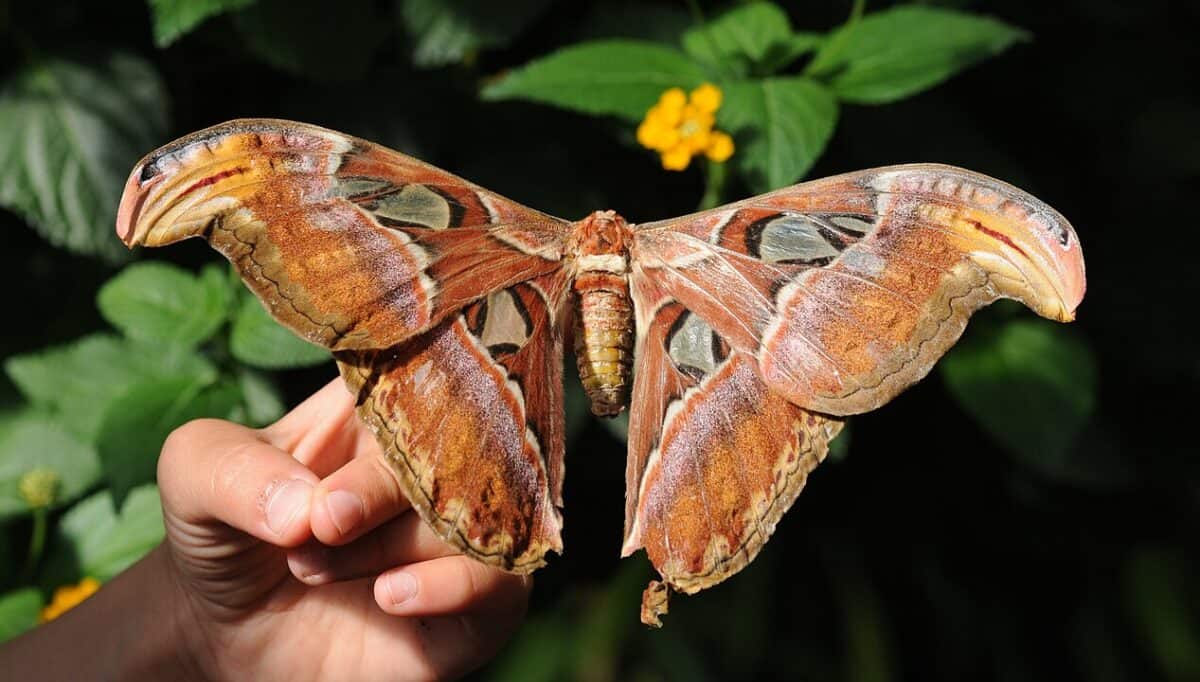
The most fascinating aspect of the Atlas moth’s biology is its inability to feed as an adult. While most butterflies and moths have a proboscis – a long, straw-like structure used to sip nectar from flowers – adult Atlas moths possess only vestigial mouthparts. These undeveloped structures are non-functional, rendering the adult moth completely incapable of feeding. This extraordinary adaptation is the result of evolutionary selection that prioritizes reproduction over longevity. The adult moth emerges from its cocoon with fully developed reproductive organs and stores of energy accumulated during the caterpillar stage, which is devoted almost entirely to consuming and storing nutrients. This energy reserve, stored primarily as fat, must sustain the adult through its brief life, focused solely on finding a mate and, for females, laying eggs.
Survival on Stored Energy: How Long Can They Live?
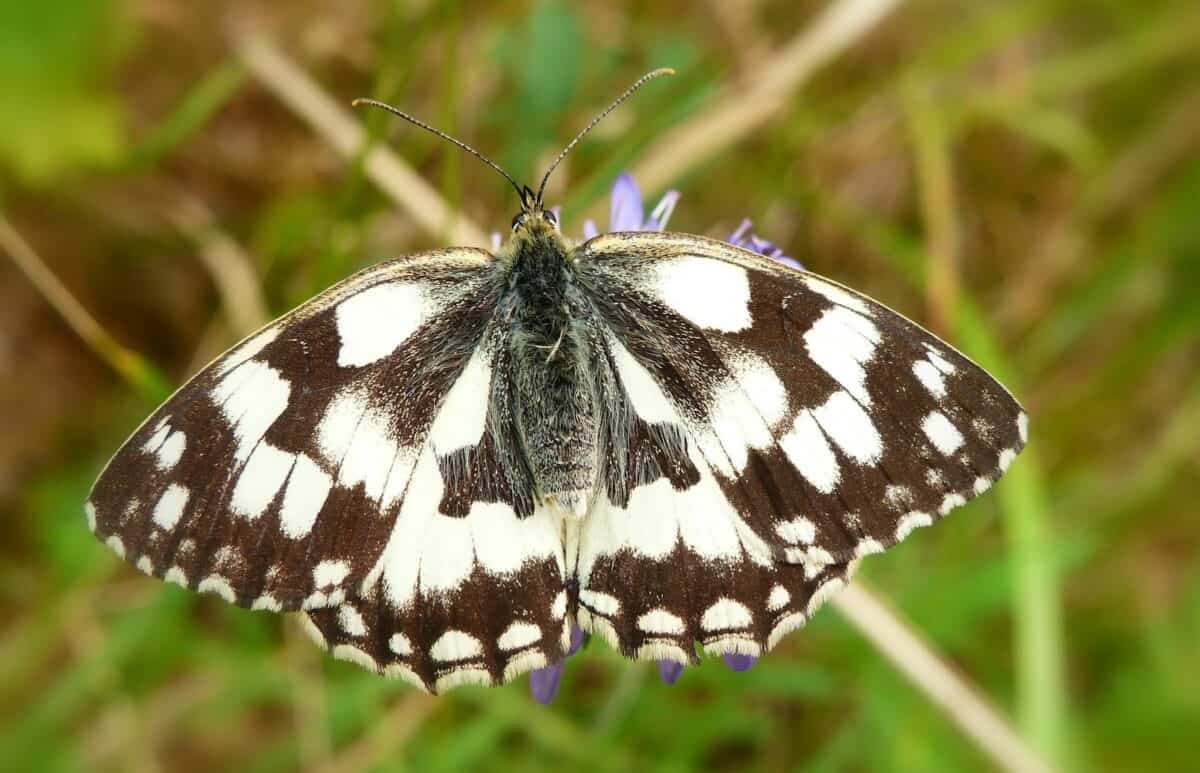
The lifespan of an adult Atlas moth is remarkably brief – typically only 1-2 weeks. Without the ability to replenish energy through feeding, these magnificent creatures must rely entirely on fat reserves accumulated during their caterpillar stage. This energy economy shapes every aspect of their adult behavior. Males emerge with larger energy stores proportional to their body size, as they must expend considerable energy flying to locate females. Females, which are slightly larger and heavier, conserve energy by remaining relatively stationary, releasing powerful pheromones to attract males. The moth’s large wings, while spectacular, require significant energy to operate, further taxing their limited reserves. This biological countdown creates a race against time, where every hour spent without successful reproduction diminishes the chance of continuing their genetic line.
The Caterpillar Diet: Fueling a Lifetime in Weeks
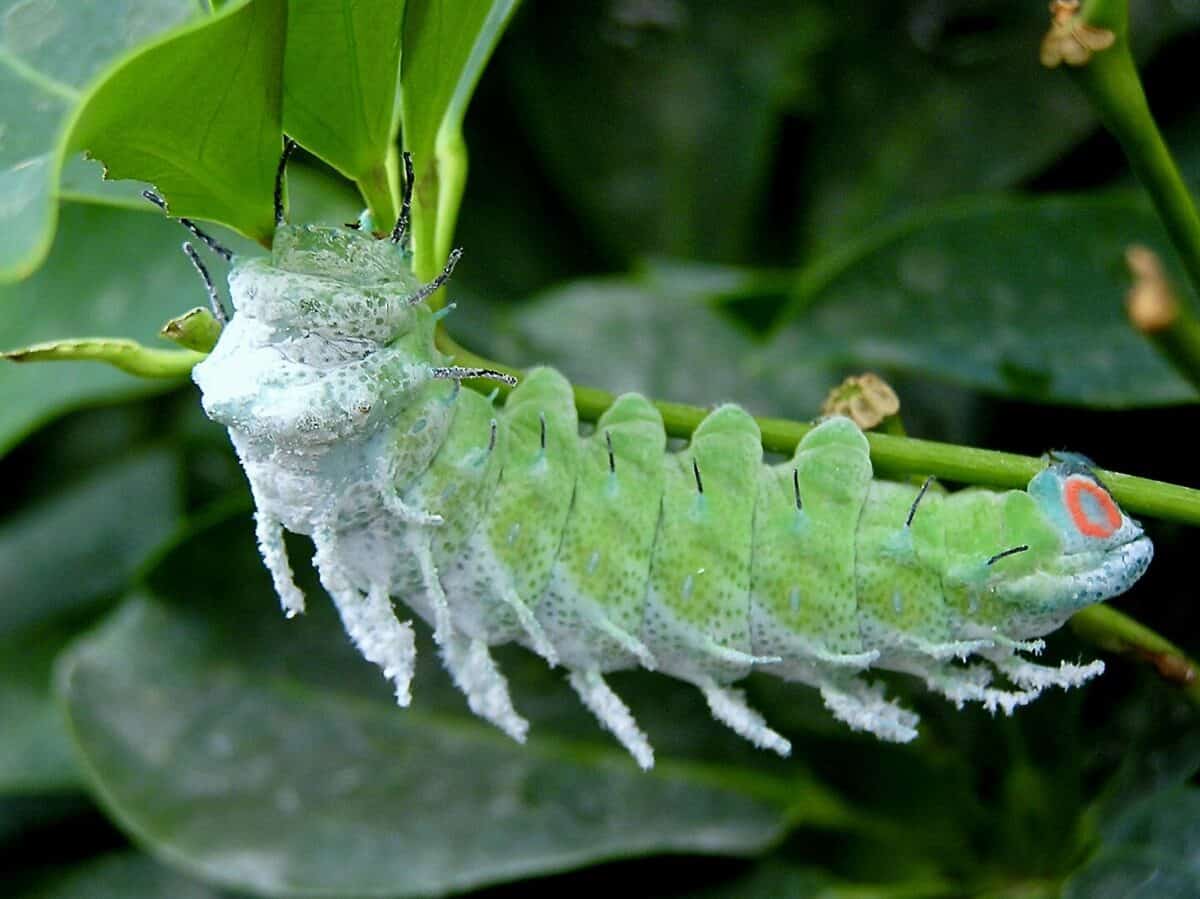
While adult Atlas moths never eat, their caterpillar counterparts are voracious feeders. These larvae consume massive quantities of leaves from specific host plants, primarily from the families Anacardiaceae, Euphorbiaceae, and Rutaceae. Preferred host plants include citrus trees, cinnamon, guava, and the Jamaican cherry. The caterpillars eat constantly, consuming many times their own weight in plant material daily. This intense feeding period allows them to accumulate all the nutrients and energy they will need for the remainder of their life cycle. The caterpillar’s digestive system is highly efficient, converting plant material into stored energy, primarily in the form of fat bodies. These energy reserves must provide all the resources needed for metamorphosis inside the cocoon and sustain the adult moth through its brief reproductive phase, making the caterpillar stage crucial for the species’ survival.
Reproductive Strategy: Life’s Single Purpose
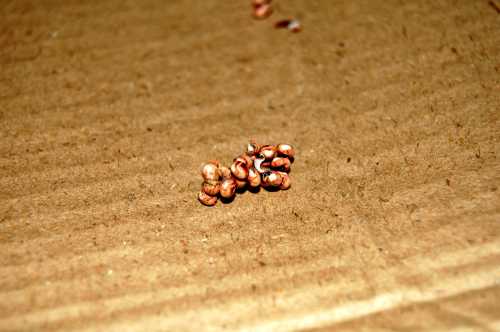
With no ability to feed and replenish energy, the adult Atlas moth’s entire existence revolves around reproduction. Upon emerging from their cocoons, adults immediately begin the mating process. Males, equipped with large, feathery antennae, can detect female pheromones from several kilometers away. They fly predominately at night, using these chemical signals to locate potential mates. Females, meanwhile, conserve energy by remaining relatively stationary, releasing powerful chemical attractants. Once mating occurs, females devote their remaining energy to egg-laying, carefully selecting appropriate host plants for their offspring. A single female can produce 120-150 eggs, distributed across multiple laying sites to increase survival chances. This reproductive strategy represents an evolutionary trade-off: by eliminating adult feeding, the moths can emerge with fully developed reproductive systems, allowing them to mate immediately without spending precious time and energy seeking food.
Evolutionary Adaptations: Why Sacrifice Eating?
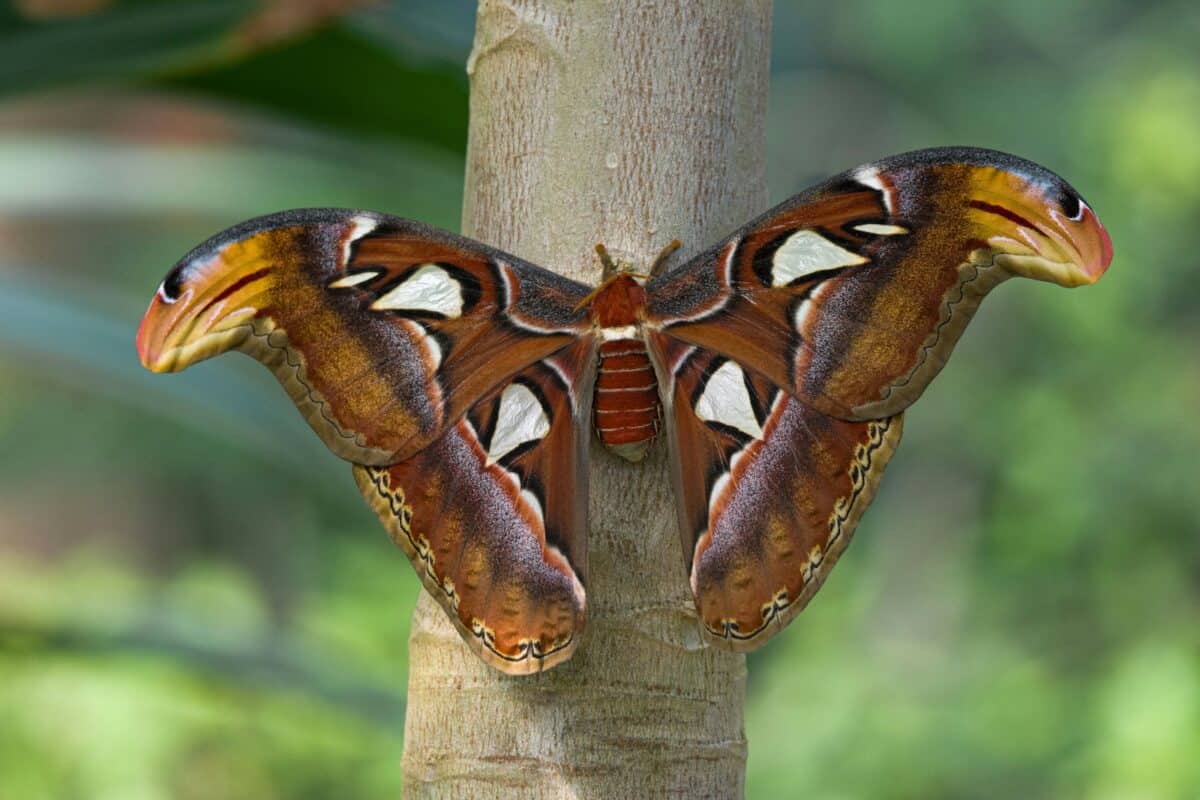
The Atlas moth’s inability to feed represents a fascinating evolutionary adaptation rather than a deficiency. This trait emerged through natural selection because it conferred reproductive advantages that outweighed the benefits of adult feeding. By eliminating the need for a functioning digestive system and the energy required to maintain it, the moth can devote more resources to reproduction. Additionally, without the need to search for food, adults can focus exclusively on finding mates and, for females, suitable egg-laying sites. This specialization likely evolved in environments where adult food sources were unreliable or where predation risks during feeding were high. Similar adaptations can be seen in other Saturniidae family members, suggesting this reproductive strategy has been successful across multiple species. The trade-off of lifespan for reproductive efficiency illustrates the fundamental principle that evolution favors traits that maximize genetic transmission to subsequent generations, even if they limit individual longevity.
Defense Mechanisms Despite Vulnerability
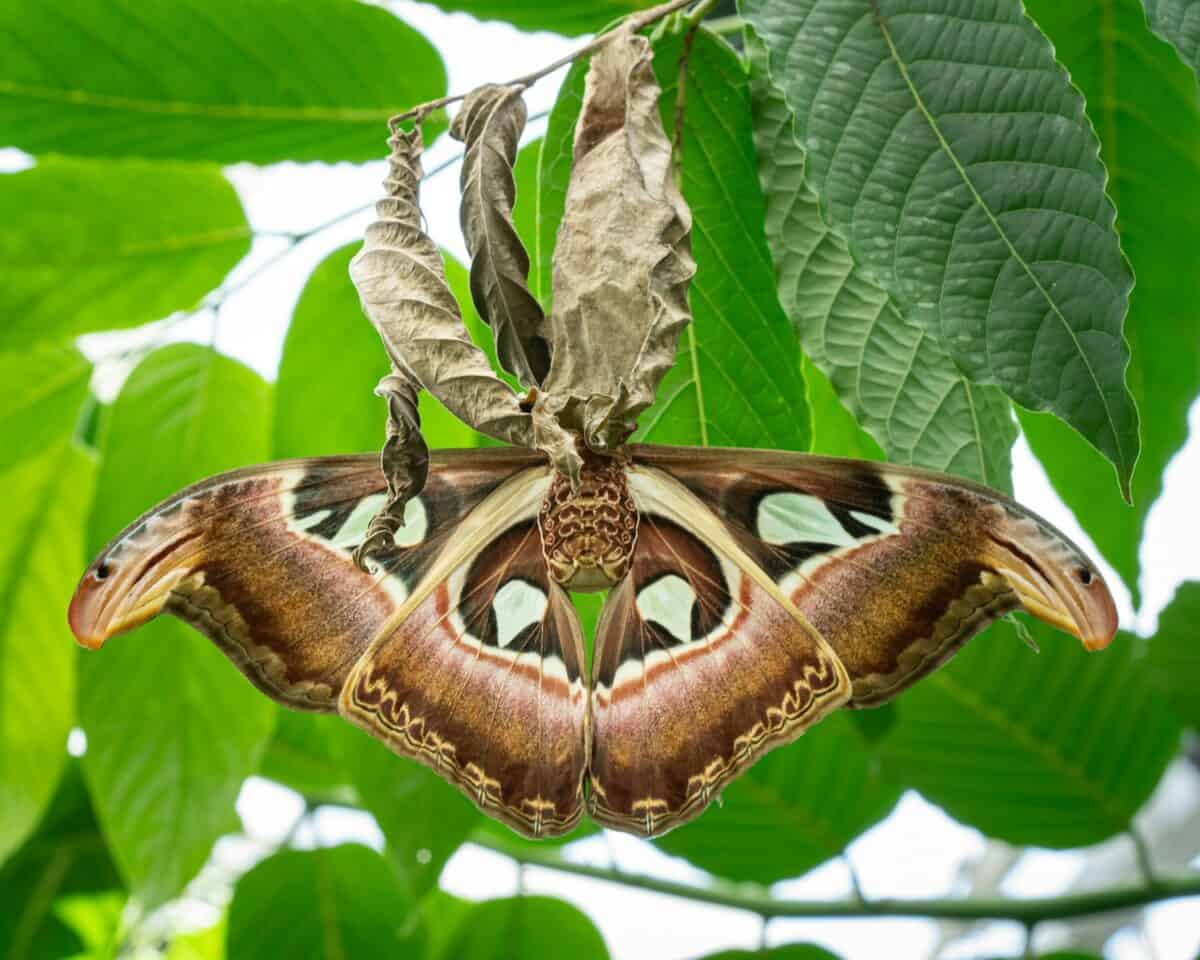
Despite their inability to flee rapidly (particularly females, which are often too heavy for sustained flight) and their lack of offensive capabilities, Atlas moths have evolved remarkable defense mechanisms. Their most notable adaptation is the wing pattern that resembles snake heads, complete with eye-like markings and scale-like patterns. This form of mimicry can startle potential predators, buying precious moments for escape. Additionally, when threatened, Atlas moths can produce a loud clicking sound by rapidly flexing specialized structures at the base of their wings. This sudden noise can further deter predators or momentarily confuse them. Their large size also works as a defense strategy – many insectivorous birds and bats target smaller prey and may avoid the outsized moth. These passive defense mechanisms are crucial for an insect that cannot replenish energy lost through escape behaviors and must conserve its limited resources for reproduction.
Cultural Significance and Human Interactions
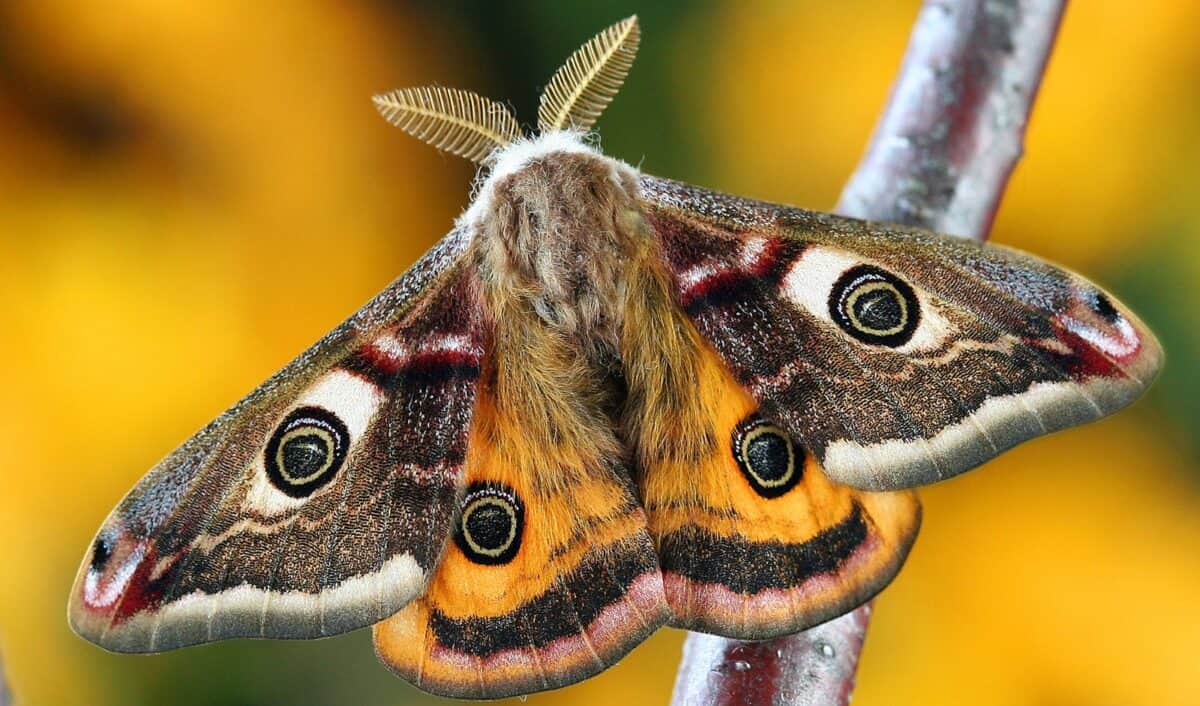
The Atlas moth has held significant cultural importance across various Asian societies where it naturally occurs. In Taiwan, the Hakka people traditionally collected Atlas moth cocoons to make silk, known as “fagara,” which was considered more durable though coarser than conventional silkworm silk. In some regions, the emergence of these moths from cocoons symbolizes rebirth and transformation. The name “Atlas” itself has multiple possible origins – it may reference the Titan Atlas from Greek mythology who held up the heavens, alluding to the moth’s impressive size, or it might derive from the Atlas Mountains in Morocco, though the moth is not found there. Today, Atlas moths are popular in butterfly conservatories and exhibitions worldwide, captivating visitors with their extraordinary size and intricate patterns. Their brief lifespan as adults adds a poignant element to their display, reminding observers of nature’s ephemeral beauty.
Conservation Status and Threats
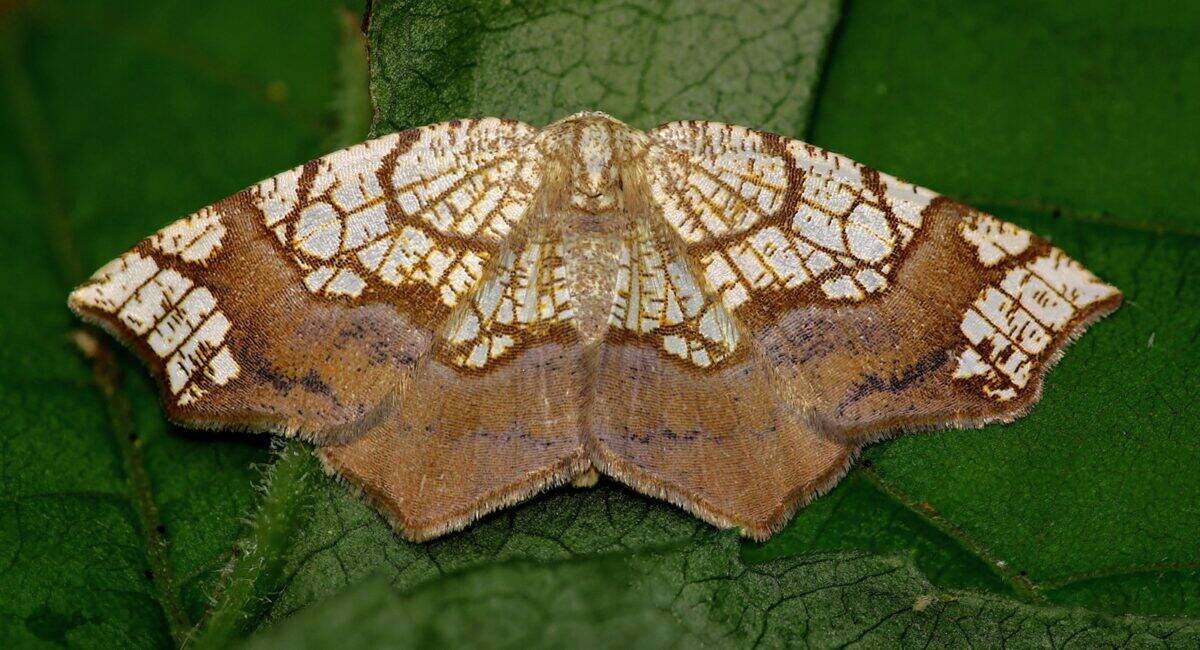
While the Atlas moth is not currently classified as endangered, it faces numerous threats that could impact its population. Habitat destruction presents the most significant risk, as deforestation throughout Southeast Asia diminishes the tropical forests these moths depend on. The loss of specific host plants is particularly concerning, as Atlas moth caterpillars require certain plant species to complete their development. Climate change poses another threat, potentially disrupting the delicate timing between moth emergence and optimal breeding conditions. Additionally, the illegal wildlife trade targets these moths for collection and display, with specimens fetching high prices in some markets despite international regulations like CITES (Convention on International Trade in Endangered Species) that restrict their commerce. Conservation efforts focus on habitat preservation and captive breeding programs, which not only help maintain populations but also educate the public about these remarkable insects and their unique adaptations.
Distinguishing Moths from Butterflies: Common Misconceptions
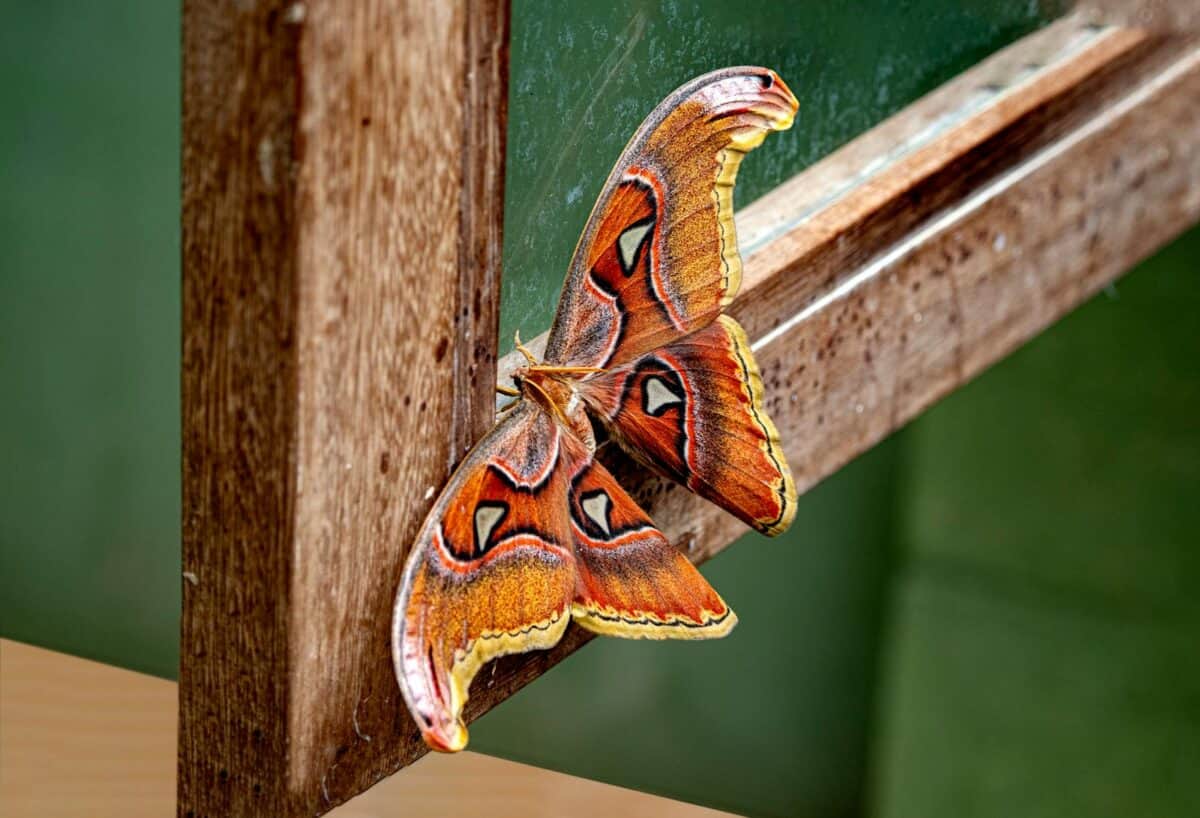
Despite being frequently called a butterfly in casual conversation and some media, the Atlas moth is definitively a moth, possessing all the characteristic features that differentiate moths from butterflies. Moths typically have feathery or comb-like antennae, whereas butterflies have thin antennae with club-shaped tips. The Atlas moth’s thick, feathery antennae are particularly pronounced in males, who use them to detect female pheromones. While most butterflies are diurnal (active during daylight), moths including the Atlas moth are predominantly nocturnal. Moths also tend to have stouter, furrier bodies than the more slender butterflies, an adaptation that helps them retain heat during cool nights. When at rest, butterflies typically hold their wings vertically above their bodies, while moths like the Atlas hold their wings horizontally, spread out in a distinctive “airplane” position. Understanding these differences helps appreciate the unique evolutionary path that led to the Atlas moth’s extraordinary adaptations, including its inability to feed as an adult.
The Atlas moth stands as one of nature’s most fascinating paradoxes – a creature of magnificent size and beauty that emerges into adulthood unable to nourish itself. This evolutionary strategy represents a profound sacrifice of individual longevity for reproductive efficiency, with the moth’s entire adult existence focused on the single purpose of continuing its species. The brief but spectacular life of the Atlas moth reminds us that in nature, success is measured not by longevity but by effective reproduction and adaptation to environmental challenges. As these remarkable insects continue to face mounting threats from habitat loss and climate change, their unique biology underscores the importance of conservation efforts to preserve the delicate balance that allows such extraordinary adaptations to persist. The Atlas moth, with wings that mimic snakes and a life sustained without eating, embodies the ingenuity and wonder of evolutionary processes that have shaped our planet’s biodiversity.
- America’s Most Endangered Mammals And How to Help - August 9, 2025
- The Coldest Town in America—And How People Survive There - August 9, 2025
- How Some Birds “Steal” Parenting Duties From Others - August 9, 2025
